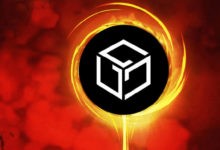For Financial Advisors, Real World Assets Could Be a Safe(r) Path to Crypto

One of the most exciting use cases for blockchain technology is commonly referred to as Real World Assets, or RWA. Based on a report from Boston Consulting Group, the on-chain RWA market is expected to reach between $4 trillion and $16 trillion by 2030.
We spend so much time talking about the value of crypto assets like bitcoin and ETH, especially when it applies to financial advisors, but RWA can drive trillions of dollars in adoption, is touted by some of the biggest names in finance (JP Morgan, Citi, Boston Consulting Group, Blackstone) and will be extremely important for advisors to understand.
Are Real World Assets like crypto assets?
Most assets we talk about with regard to blockchain are chain-native assets like bitcoin, ETH, SOL, or UNI. This means they are native to a public blockchain and derive their value from the use or performance of a protocol.
For example, bitcoin is an incentive for miners to continue processing blocks on the Bitcoin blockchain, while ETH is used to pay for transactions on the Ethereum network.
When we talk about Real World Assets, we usually mean the integration of using on-chain databases to track the assets, with performance and valuation coming from outside the blockchain.
For example, I could have a token that represents equity in a real estate investment, or in a pool that lends money to entrepreneurs in the developing world. While the token is on a blockchain, the assets and payments are in the real world.
The Real World Asset tokens are simply representations of assets that are not necessarily blockchain-native, and are NOT volatile assets like we think of in crypto. These RWA tokens, like all cryptographic tokens, are programmable, so we can encode lockup periods, and accredited investor requirements.
Why use a blockchain?
Public blockchains are simply decentralized databases, good for storing information in an immutable manner. We currently store our data – money, private company equity, loans, financial records – in centralized databases with names like Google, Amazon, Chase, Schwab and your local county title database. Therefore, we have to ask permission every time we want to access that data, and the data from one silo doesn’t easily or natively work with data from another.
When we move that data onto a public blockchain, we can control it using a wallet, a self-custody technology that works hand in hand with blockchains. Once it’s there, we can take advantage of many of the benefits of public blockchains:
Transparency: for understanding the true value of an asset
Efficiency: for making distributions to owners via their wallets
Liquidity: the on-chain nature allows for marketplaces so we can buy and sell previously illiquid assets.
Self-custody: I can maintain control over my assets.
Collateralization: I can use my assets as collateral, possibly even through decentralized finance (DeFi) protocols.
Why should advisors learn?
Clients are increasingly interested in alternative assets – private credit, real estate, collectibles. Often RWA tokens will represent some of these alternatives.
We already see private credit from Maple Finance and Goldfinch, as well as collectibles from Rally Road and 4K. For years, we haven’t seen many options for clients to find income in their portfolio. As interest rates have risen, many of the RWA options offer double-digit returns through interest, without the crypto volatility risk. They can make low-risk loans in markets where Traditional Finance can’t or won’t go, and keep the process efficient.
Advisors will need to understand the increased transparency and liquidity. Your clients may have the chance to sell half their real estate tokens after 12 months, and use that money to invest in a pool aimed at providing invoice factoring.
Advisors should also have a good knowledge of self-custody, and the efficiencies and security risks inherent to it, so they can help clients invest in these alternatives.
Additionally, the increase in activity around RWA will drive more use of the networks. For blockchains like Ethereum and Polygon, this may also trigger higher token prices since the native token – ETH or MATIC – is used to pay for the transactions.
The promise of blockchain technology has always been about increasing inclusion and efficiency through public databases. Unlike addressing native crypto assets, which can be volatile and subject to new regulations, Real World Assets on-chain are simply more efficient, transparent ways to denote what people are already comfortable investing in.







 Bitcoin
Bitcoin  Ethereum
Ethereum  Tether
Tether  USDC
USDC  Dogecoin
Dogecoin  Cardano
Cardano  TRON
TRON  Bitcoin Cash
Bitcoin Cash  Chainlink
Chainlink  Polygon
Polygon  Litecoin
Litecoin  LEO Token
LEO Token  Dai
Dai  Ethereum Classic
Ethereum Classic  Hedera
Hedera  Stacks
Stacks  Cronos
Cronos  Stellar
Stellar  Cosmos Hub
Cosmos Hub  OKB
OKB  Maker
Maker  Monero
Monero  Theta Network
Theta Network  Algorand
Algorand  NEO
NEO  Gate
Gate  KuCoin
KuCoin  Tezos
Tezos  Synthetix Network
Synthetix Network  EOS
EOS  IOTA
IOTA  Tether Gold
Tether Gold  Bitcoin Gold
Bitcoin Gold  TrueUSD
TrueUSD  Zilliqa
Zilliqa  Holo
Holo  Enjin Coin
Enjin Coin  0x Protocol
0x Protocol  Ravencoin
Ravencoin  Qtum
Qtum  Siacoin
Siacoin  Basic Attention
Basic Attention  Ontology
Ontology  Dash
Dash  NEM
NEM  Zcash
Zcash  Decred
Decred  Waves
Waves  Lisk
Lisk  DigiByte
DigiByte  Nano
Nano  Status
Status  Pax Dollar
Pax Dollar  Numeraire
Numeraire  Hive
Hive  Steem
Steem  Huobi
Huobi  OMG Network
OMG Network  BUSD
BUSD  Ren
Ren  Bytom
Bytom  Bitcoin Diamond
Bitcoin Diamond  HUSD
HUSD  Kyber Network Crystal Legacy
Kyber Network Crystal Legacy  Energi
Energi  Augur
Augur